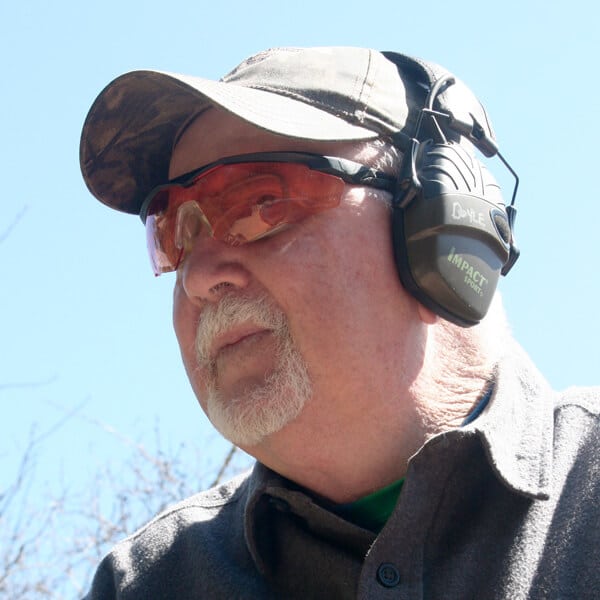When Your CCW Will Fail You (and How To Fix It)
July 25th, 2024
7 minute read
Editor’s Note: The following article is offered for informational purposes only. The author’s opinions do not necessarily reflect those of The Armory Life. We recommend you seek out in-person professional training with a competent instructor. Whenever training, follow the common rules for firearms safety and use only unloaded firearms in a safe area whenever appropriate.
Taking up a gun for personal defense is a tremendous responsibility that requires a serious commitment. You not only have to become proficient with the practical aspects of running the gun — such as defensive-shooting marksmanship, operational skills and basic tactics — but you must also prepare your mind for the possibility of a deadly encounter.

Having the requisite skills and good equipment will certainly go a long way in keeping you safe, but that represents only part of the picture. One needs to have an intimate knowledge of the laws regarding use of force as well as develop a winning mindset. No matter what kind of dirty hand you might be dealt, you must prepare if you want to be able to respond if faced with an unavoidable and deadly threat.
How Do You Get to Carnegie Hall?
Preparing for that worst-case contingency requires regular practice. I’m often queried on exactly what we should be practicing. We can probably find the answer by looking at the historic patterns of attack. The overwhelming majority of these incidents occurred inside of conversational distance, often unfolded with little or no forewarning, and under lighting conditions categorized as less than optimum. If you are having a really bad day, there could be more than one assailant.
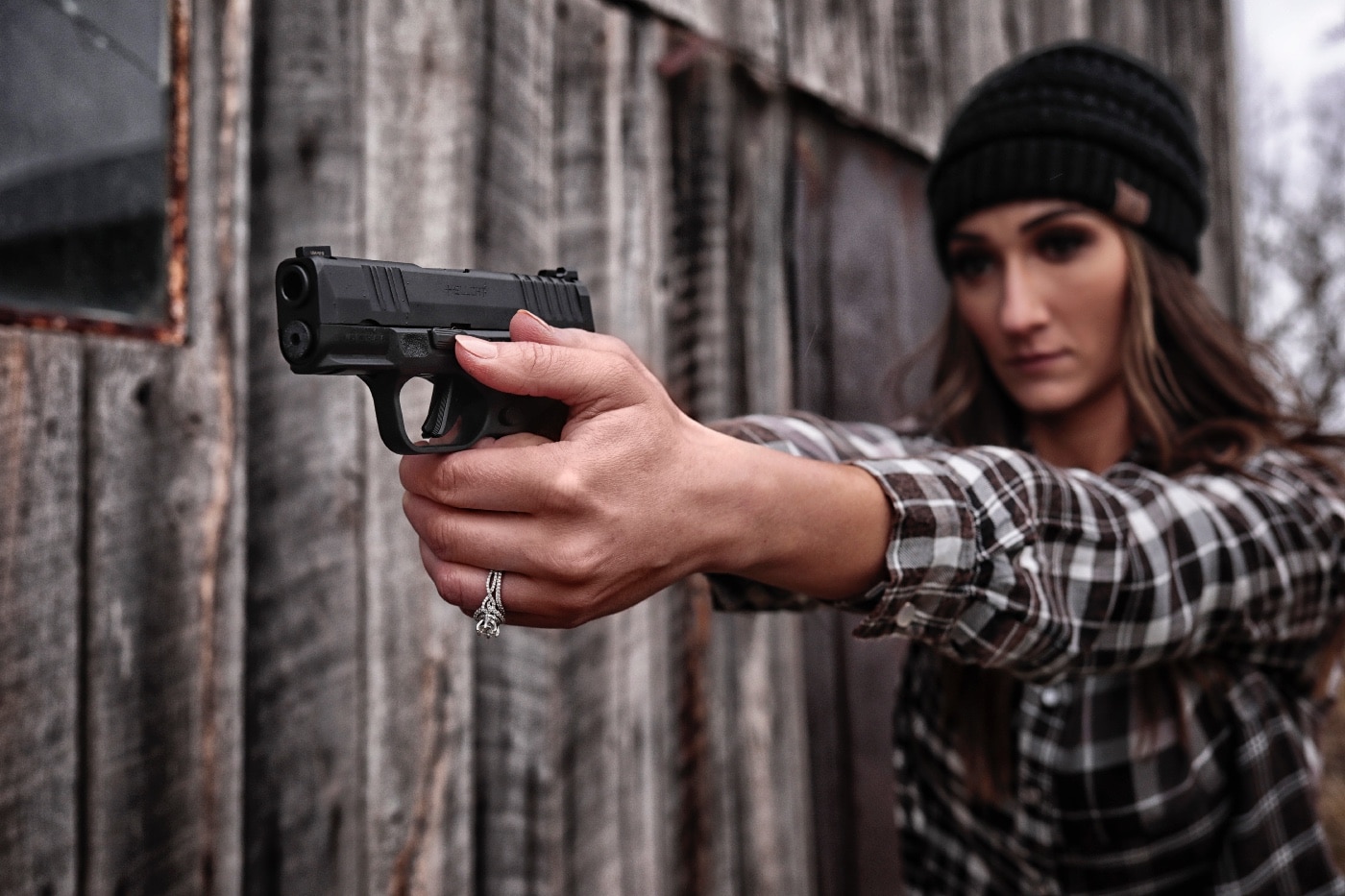
To me that’s a pretty good indicator that the majority of our practice should be devoted to making decisive hits on simulated threats set anywhere from arm’s length back to 7 yards or so in the quickest possible time frame. If we can somehow work out movement and use of cover all in reduced light, so much the better.
While this may not represent the entire picture, having the ability to effectively deal with a threat or two in close proximity will give the armed citizen a leg up on dealing with the majority of street problems. Unlike police officers, you will not be making motor vehicle stops, responding to armed robberies, or doing forced entries on dangerous criminal subjects, as those tasks require a wider range of skills. You might have enjoyed that room-clearing scenario at the big-name shooting school where you expended at least three magazines and walked away with an ear-to-ear grin, but that likely does not represent your reality.

One reality that is seldom discussed in the training of armed citizens is the possibility that you may be seriously injured before you can react to the threat. This is hardly unusual in the law enforcement world, and I think one would be naïve if they didn’t think it could happen to them just because you are not wearing a badge. Bad things do in fact happen to good people. The “it will never happen to me” attitude can leave you at a big deficit if the sum total of your training consists solely of shooting at a two-dimensional static target posted a few yards away.
An element I like to incorporate into my training is “what if”. What if I put this bad guy down and he gets back up and continues to fight? What if I’m injured before I can stop the fight?
Some might consider training to fight through an injury a waste of time, but I strongly disagree. I am personally acquainted with three law enforcement officers who took the fight back to their adversaries after being seriously injured, and they ultimately prevailed. Their mindset and training got them through despite what some might categorize as an “unwinnable” scenario. Two of these situations involved multiple assailants.
Grounded
Serious students of personal defense incorporate shooting support hand only into their training regimen. Clearly, an injury to the dominant side hand, arm or shoulder could put you in a very bad spot, and a little practice from the “stupid” side may indeed be a lifesaver. Yet another possibility that warrants consideration is firing from the ground. This should not be confused with traditional prone firing positions, but rather instances where being pushed, slipping or sustaining an injury has taken you to the ground and there is a viable threat in close proximity.
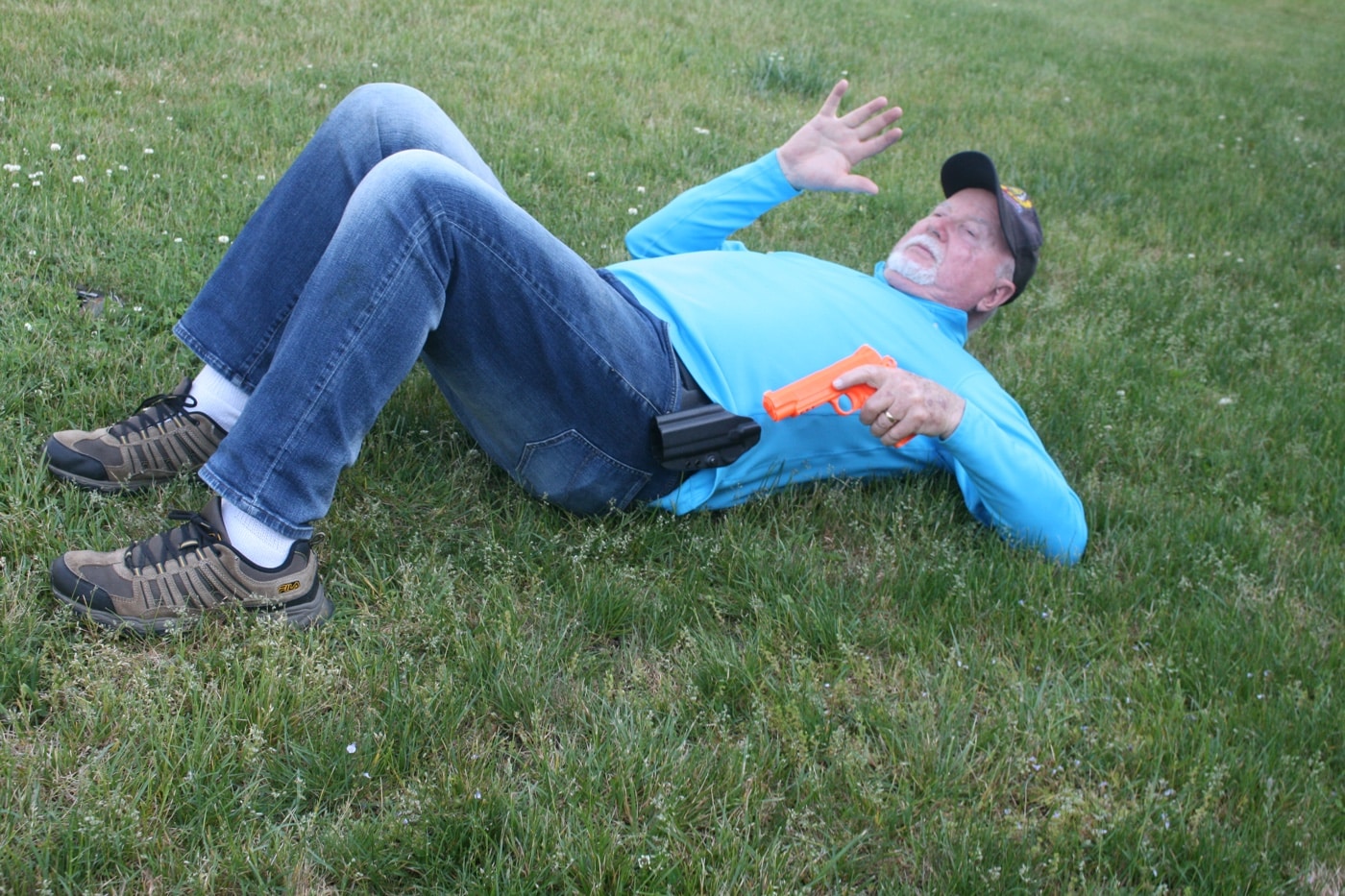
If we accept the fact that we might find ourselves on the deck and the fight is still ongoing, there are quite a few possibilities to consider. First, consider exactly where your handgun is at this point in time. Is it in the holster, in hand, or has it fallen to the ground? Am I on my back, belly or on my side? Assuming deadly force is required, where is my assailant and what kind of weapon does he have?
To say the least, if the sum total of your firearms training experience has been shooting from traditional positions such as standing or kneeling, responding from the ground will prove to be very different. Suffice it to say, being taken to the ground by gravity alone may result in some physical and mental trauma. If you can get your gun out toward the threat, it is very likely you might be looking sideways at those sights. Another very real concern when you have violently hit the ground and have been taken well outside of your comfort zone is covering your own body parts with the muzzle of your pistol.
Should you exercise the proper precautions, shooting from the various grounded positions can be done in complete safety with no risk to yourself or bystanders. I have conducted this sort of training for many years and to date have never had a problem, even with multiple shooters on the line at the same time. Be advised you may not be able to train in this manner at the local gun club or certainly at your favorite indoor range, but there are ways to work around that.
Different Strokes
Training from non-typical positions is primarily done with unloaded guns (check it twice) sans magazine or inert trainers. Only when you are absolutely certain the muzzle is under control and not pointed in an unsafe direction should we attempt live fire.
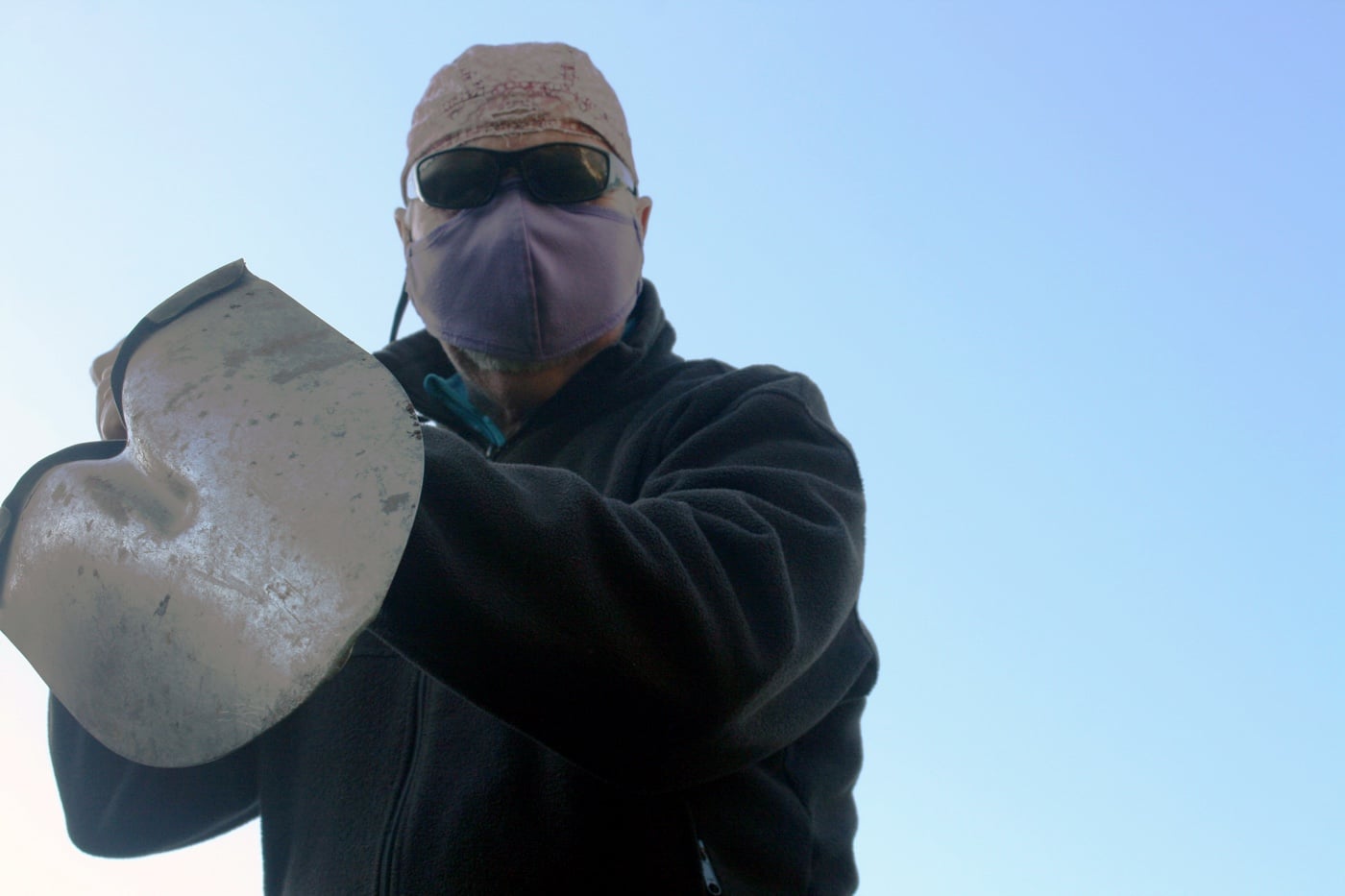
One way of safely shooting from a grounded position is to draw the pistol, place it on the deck ejection port up and with the muzzle pointed downrange. Take a grounded position where the pistol is in close proximity to the shooting hand. On the stimulus, the shooter picks up the pistol, indexes on the target, and fires the requisite number of shots. Pause for a second after shooting and return the pistol to the ground, being careful not to cover your body parts or anyone else.
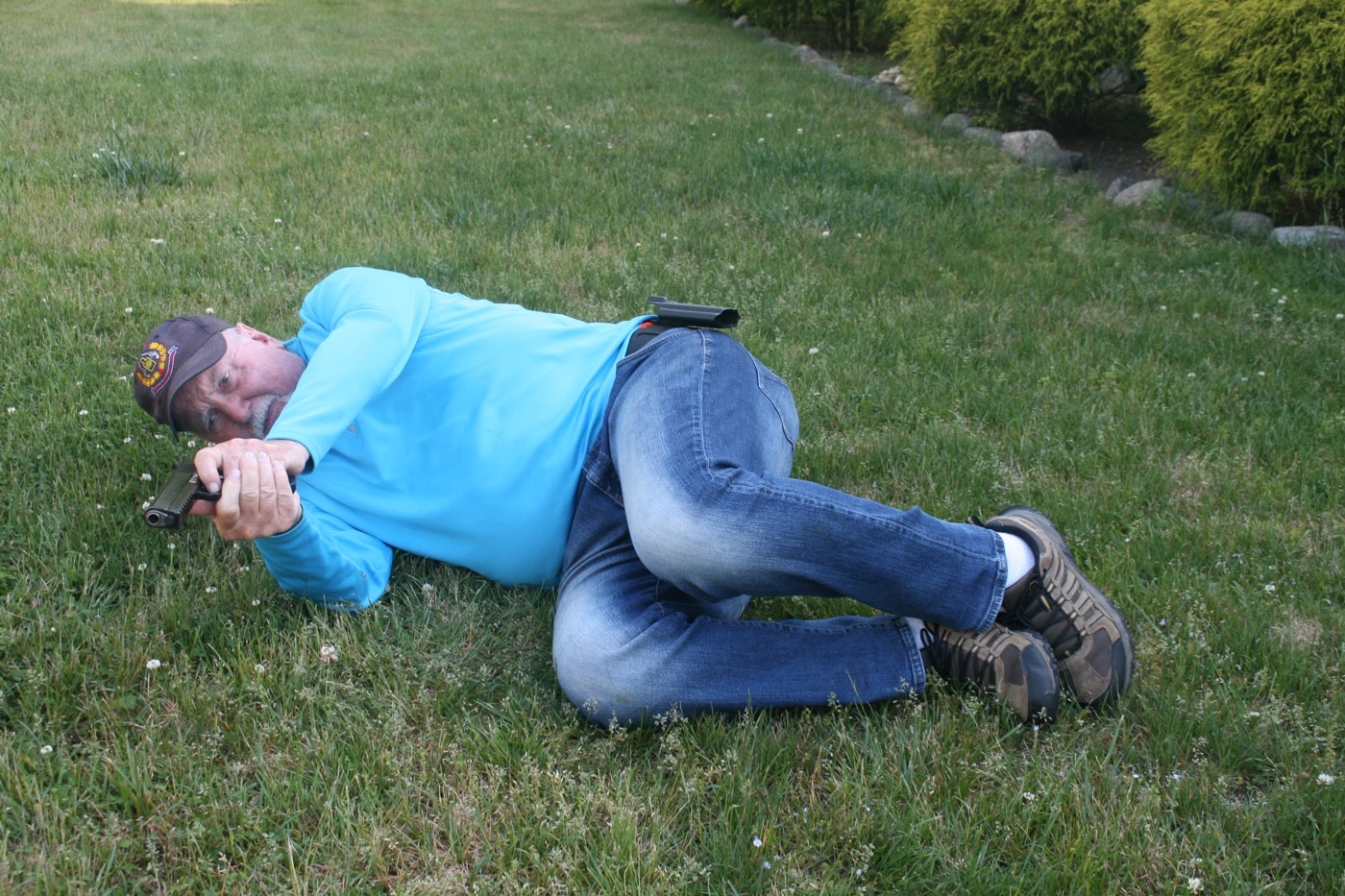
Most shooters have no problem at all shooting from the ground while laying on their side or belly. As long as the shooter understands the concept of muzzle discipline, there should not be any issues. Firing from a supine position with the shooter on his/her back and feet forward can be an issue if you don’t pay attention to the details. Assuming the target is downrange toward the feet, it is extremely important that the muzzle of your pistol does not cover your leg or foot as you pick it up and drive it out to fire. Also, that finger should not come in contact with the trigger until we have indexed on the target and made a conscious decision to fire.
Caveats
As indicated earlier, these techniques will not possible on a traditional public range. I certainly get that but that doesn’t mean you shouldn’t get familiar with them. If live fire is outside the realm of possibility, you can practice some of these oddball positions in your home with an empty gun or an inert trainer. Trust me, this will feel very strange at first, especially when looking through the sights of your gun sideways!
Your practice regimen should focus on the things that are most likely rather than less likely to occur. But bear in mind that improvisation under extreme stress is not one of our strong points. Even a little dry, off-the-range practice on firing from the ground with an empty gun or inert trainer will broaden your horizons.
Editor’s Note: Be sure to check out The Armory Life Forum, where you can comment about our daily articles, as well as just talk guns and gear. Click the “Go To Forum Thread” link below to jump in!
Join the Discussion
Continue Reading
Did you enjoy this article?

 366
366





